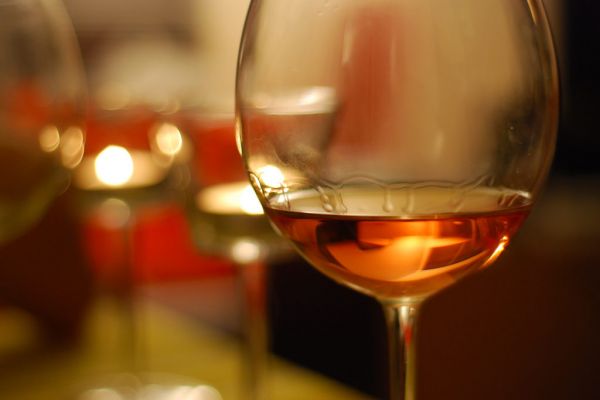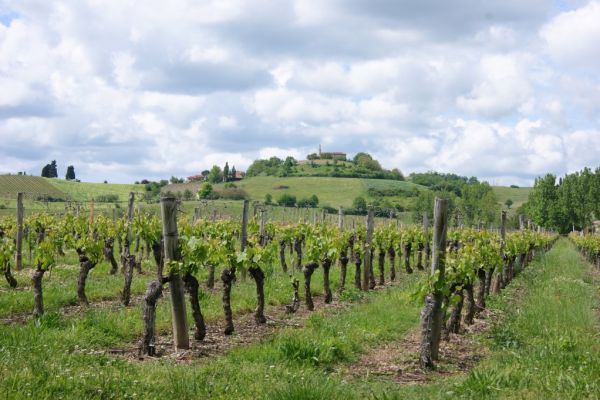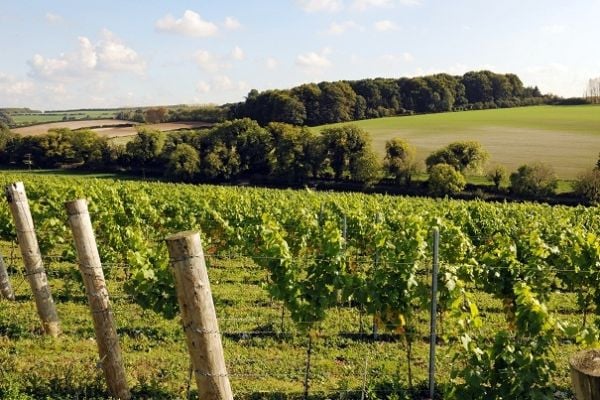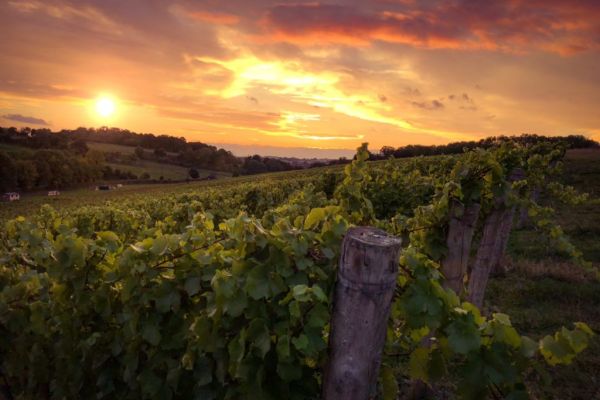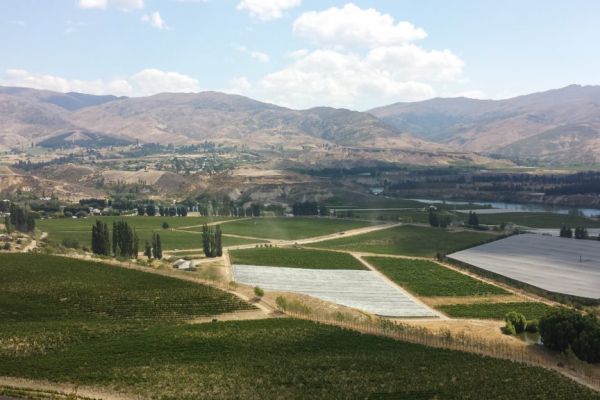When high-end, wine-centric restaurant Rouge Tomate reopens next month in New York’s Chelsea district, there will be plenty of “orange” wines on the list.
Traditionally from Georgia in Eastern Europe, these tannic white wines—made like reds, with grape skins left in during fermentation and aging—have been trending for four or five years as vinous exotica, touted as the fourth wine color. Have they finally become more than novelties?
“They’re here to stay,” says Rouge Tomate Chelsea wine director Pascaline Lepeltier, who sent me a long list of her favorite producers.
A surprising number of restaurants around the world now seem to agree. When the London Ritz updated its very traditional 800-wine “Livre du Vin” this year, five orange wines, with two by the glass, were among the 150 wines added from obscure locations. That doesn’t sound like much, but it amounts to a lot at a restaurant previously focused on Burgundy and Bordeaux.
As a judge for the World of Fine Wine’s 2016 restaurant wine list awards, I discovered good orange selections not just at hipster wine bars such as Brooklyn’s Four Horsemen (seven) and 10 William Street in Sydney (25), but also at casual restaurants like Montreal’s Lawrence (eight) and new elegant ones like London’s Fera (more than 30). Fig, a James Beard award-winning spot in Charleston, S.C., added an orange wine category a year ago.
There are no market statistics on the number of orange wines now being sold, but dozens of wineries, including Chapel Down in England, have added at least one to their lineups. Lorena Ascencios, head buyer at Astor Wines, says the large New York shop carries more than ever because of increased interest. And Frank Dietrich of importer Blue Danube Wine Co. says his sales of orange wine continue to rise.
The “fetch” of the wine world has finally happened.
But like me, Lepeltier doesn’t like the term “orange.” She prefers to label them “skin-fermented” wines. (I don’t think that’s going to stick, but I get her point.)
New York’s Gramercy Tavern lumps them together as “Unconventional Whites.” At Frasca, in Boulder, Colo., which won the award for best design/most original wine list, they’re listed as “Macerated Wines.” At New York’s The Clam, they’re labeled “Off-Whites,” not exactly the most flattering description.
Typical whites are pale in color because the clear pressed juice is immediately separated from the grape skins; for orange wines, the juice is kept in contact with the skins for a week to a year, picking up tannin, weight, color, and extra aromas and flavors.
The problem is what to expect when you open one.
Just about any white grape can be made with extended skin contact, but if the juice macerates for more than a year, the wine will be a lot more tannic and have different flavors than if it remains on the skins for only a couple of weeks. Those aged in clay amphorae buried in the earth—the traditional method in Georgia that’s now becoming popular among adventurous winemakers elsewhere—don’t taste like those that spend time in old oak barrels, and so on.
One orange wine can be very different from another, given this whole new layer of complexity outside the typical terroir and aging factors we’re already used to in our reds, whites, and rosés.
The color can be golden, bright amber, peach, or rust, even brownish; the tastes range from fresh-cut apricots, spice, and herbs to tangy, smoky, nutty, and savory, with more intense aromas and the texture and structure of reds without the heaviness. That’s why they’re awfully good in summer, though they’re definitely not going to make rosé passé.
Making whites this trendy way is an ancient method, first used several thousand years ago in the nation of Georgia. Josko Gravner, the modern godfather of orange wine, brought the idea to Italy and Slovenia, which has been the orange wine epicenter. But the wine world is full of experimenters. Recently I’ve tasted fine examples from Croatia, France, Austria, Australia, California, the Finger Lakes, and Long Island.
A caveat: Some of these wines taste downright weird, with a sour, cidery quality. I’ve watched drinkers take a sip and say, “Oh, how interesting,” before quickly ordering something else. (There is such a thing as showing too much skin.)
But top winemakers make examples that are deliciously complex, even thrilling, and well worth drinking, especially in summer. Here are my eight picks.
Orange Wine Bottle Buying Guide
2014 Pheasant’s Tears Mtsvane ($20)
Wines from the Republic of Georgia are having a moment, with exports up 44 percent from a year earlier. This winery, founded in 2007 by American painter John Wurdeman, skin-ferments its wines in qvevri, clay amphorae lined with beeswax and buried. I love this deep gold, spicy one, from the mtsvane grape. It’s crisp, but mouth-filling, with tastes of smoky apricots. pheasantstears.com
2013 Channing Daughters Ramato ($25)
In the Hamptons, former chef Christopher Tracy makes this dry, exotic, spicy white with apricot and honey aromas from pinot grigio grapes. Ramato is an Italian term used in Friuli for skin-fermenting the varietal to create a copper-colored wine. This one spent only 14 days on the skins, so it’s a great orange wine introduction. channingdaughters.com
2012 Cos Pithos Bianco ($35)
A biodynamic winery in Sicily makes this golden orange-hued wine from local grecanico grapes, macerated for seven months in clay amphorae. It has explosive aromas of mint, green tea, and wildflowers, and deep, lemony, earthy, complex flavors. cosvittoria.it
2014 The Forlorn Hope Dragone Romato Pinot Gris ($35)
This ramato, from grapes grown high in California’s Sierra Foothills and macerated on the skins for one month, is rich and fleshy, and smells and tastes of slightly bitter orange peel and wet stones. (They’ll soon be pouring it by the glass at New York’s Bar Boulud.) forlornhopewines.com
2014 Cullen “Amber” Semillon Sauvignon Blanc ($35)
Packed with flavors of ginger, dried pears, and a smoky mineral note, this copper-colored wine is the first orange wine from star Australian winemaker Vanya Cullen. Made with up to one month of skin contact in amphorae and oak barrels, it’s complex and rich-textured. cullenwines.com.au
2012 Foradori Fontanasanta Nosiola ($50)
Elisabetta Foradori won fame for her reds in Italy’s steep Dolomite mountains. She ferments this brilliant yellow-gold wine made from nosiola grapes in clay amphorae for eight months. It’s rich and savory, the kind of wine you want with grilled pork. elisabettaforadori.com
2009 Paolo Bea Arboreus ($62)
Amber-hued, this example from the Montefalco region of Umbria is one of the benchmarks of orange wine, made from trebbiano spoletino grapes left with the skins for at least three weeks. It tastes and smells autumnal, with intense aromas of dried flowers and herbs, and a full, rich texture. paolobea.com
2006 Gravner Ribolla Gialla Anfora ($100)
Josko Gravner made his fame by trading oak barrel aging for fermenting and aging the juice in amphorae that are buried in the earth. On the skins until the spring after harvest, this is riveting: intense, powerful, smoky. gravner.it
News by Bloomberg, edited by Hospitality Ireland
